Japanese Prime Minister Shigeru Ishiba’s ruling party suffered a major defeat in key elections this Sunday as a far-right party born amid the Covid pandemic scooped massive gains.
Ishiba’s Liberal Democratic Party (LDP), which has governed almost continuously since 1955, and its junior partner Komeito fell a projected three seats short of retaining a majority in the upper house of Japan‘s parliament, the Diet.
The debacle comes only months after Ishiba’s coalition was forced into a minority government in the more powerful lower house, in the LDP’s worst result in 15 years.
The bruised LDP will now need the backing of another party in both houses if it hopes to pass any new legislation.
Even so, Ishiba has declared he will not step down, pointing out that Japan is currently negotiating with US President Donald Trump to avoid rising tariffs, with the deadline for an agreement set at August 1.
‘I believe I must fulfil my responsibility as the party with the most votes and to the people of the country,’ the Prime Minister said as his party reeled from another defeat.
The LDP’s loss came in no small part due to the advance of the far-right Sanseito party, led by YouTube sensation and self-confessed Trump admirer, Sohei Kamiya.
While Ishiba’s LDP has been in power almost every year since its founding in 1955, Sanseito was only founded this decade.
But under the leadership of the hot-blooded Kamiya, the anti-immigration, anti-globalist ‘Japanese First’ party stormed to 14 seats.
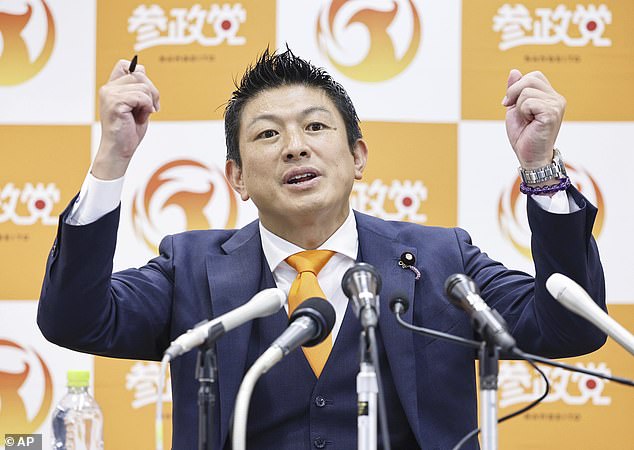
Sohei Kamiya, leader of Sanseito party speaks to the media following the upper house election in Tokyo, Sunday, July 20, 2025
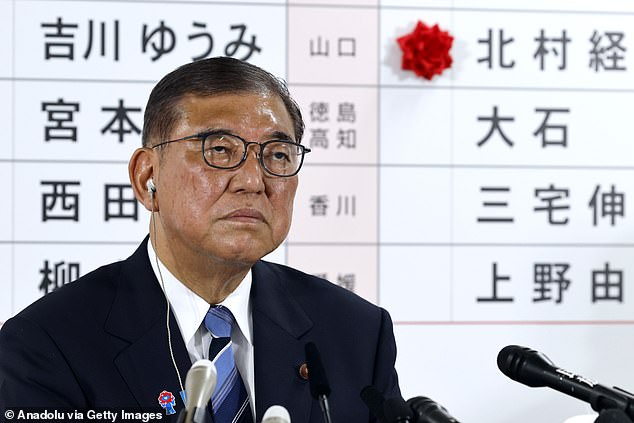
Shigeru Ishiba, Japan’s Prime Minister and president of the ruling Liberal Democratic Party (LDP), listens to a question from a journalist at the LDP headquarters in Tokyo, Japan, 20 July 2025

Kamiya, a former supermarket manager and English teacher, says he has drawn inspiration from US President Donald Trump’s ‘bold political style’
Sanseito gained support with warnings of a ‘silent invasion’ of immigrants, and pledges for tax cuts and welfare spending as Japanese society complains of rising prices.
Birthed on YouTube during the COVID-19 pandemic spreading conspiracy theories about vaccinations and a cabal of global elites, the fringe party broke into mainstream politics with its ‘Japanese First’ campaign.
‘The phrase Japanese First was meant to express rebuilding Japanese people’s livelihoods by resisting globalism,’ Kamiya, 47, said in an interview with local broadcaster Nippon Television after the election.
I am not saying that we should completely ban foreigners or that every foreigner should get out of Japan.
‘We were criticised as being xenophobic and discriminatory. The public came to understand that the media was wrong and Sanseito was right,’ Kamiya said.
In polling ahead of Sunday’s election, 29% of voters told NHK that social security and a declining birthrate were their biggest concern.
A total of 28% said they worried about rising rice prices, which have doubled in the past year. Immigration was in joint fifth place with 7% of respondents pointing to it.
Kamiya’s message grabbed voters frustrated with a weak economy and currency that has lured tourists in record numbers in recent years, further driving up prices that Japanese can ill afford, political analysts say.
Japan’s fast-ageing society has also seen foreign-born residents hit a record of about 3.8 million last year, though that is just 3% of the total population, a fraction of the corresponding proportion in the United States and Europe.
Kamiya, a former supermarket manager and English teacher, told Reuters before the election that he had drawn inspiration from US President Donald Trump‘s ‘bold political style’.
He has also drawn comparisons with Germany’s AfD and Reform UK although right-wing populist policies have yet to take root in Japan as they have in Europe and the United States.
Post-election, Kamiya said he plans to follow the example of Europe’s emerging populist parties by building alliances with other small parties rather than work with an LDP administration, which has ruled for most of Japan’s postwar history.
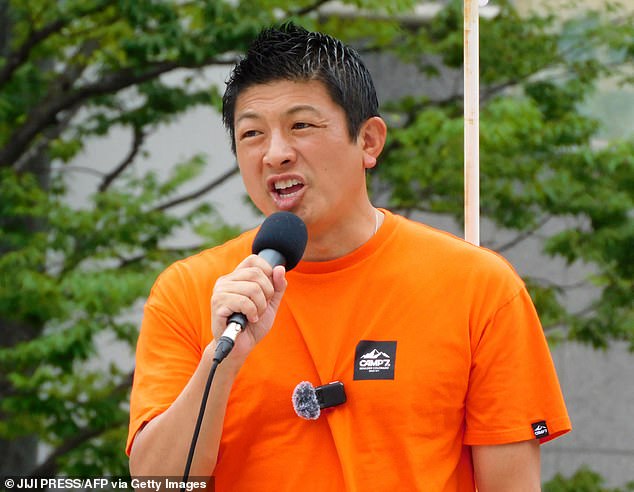
Japan’s opposition party Sanseito leader Sohei Kamiya delivers a campaign speech ahead of the July 20 upper house elections in Yokkaichi, Mie Prefecture on July 18, 2025
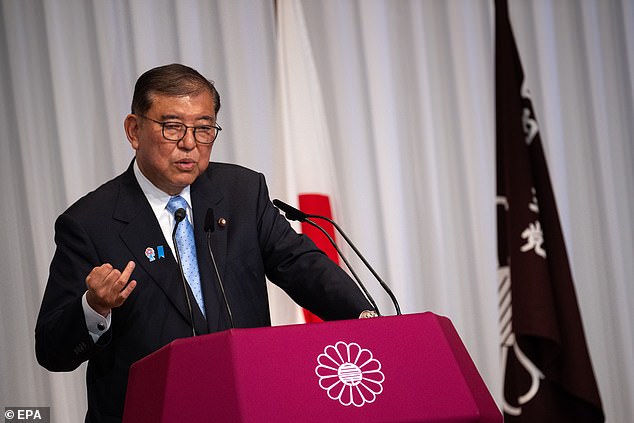
Japan’s Prime Minister Shigeru Ishiba attends a press conference at the headquarters of the Liberal Democratic Party (LDP) in Tokyo, Japan, 21 July 2025
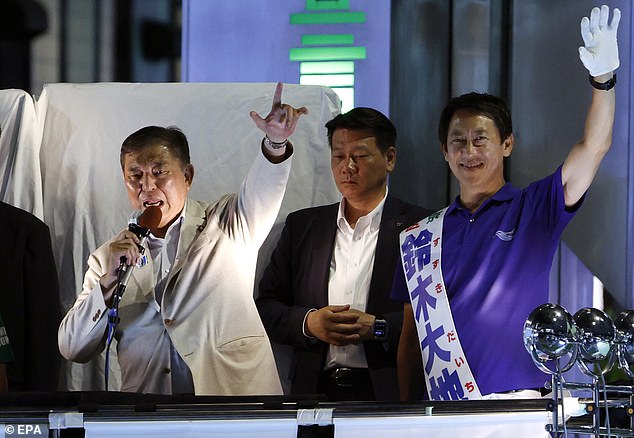
Japanese Prime Minister and President of the ruling Liberal Democratic Party Shigeru Ishiba (L) gives a speech in support of a candidate on the last day of campaigning for the 2025 House of Councillors election, in Tokyo, Japan, 19 July 2025
Sanseito’s focus on immigration has already shifted Japan’s politics to the right.
Just days before the vote, Ishiba’s administration announced a new government taskforce to fight ‘crimes and disorderly conduct’ by foreign nationals and his party has promised a target of ‘zero illegal foreigners’.
Kamiya, who won the party’s first seat in 2022 after gaining notoriety for appearing to call for Japan’s emperor to take concubines, has tried to tone down some controversial ideas formerly embraced by the party.
During the campaign, Kamiya, however, faced a backlash for branding gender equality policies a mistake that encourages women to work and keeps them from having children.
To soften what he said was his ‘hot-blooded’ image and to broaden support beyond the men in their twenties and thirties that form the core of Sanseito’s support, Kamiya fielded a raft of female candidates on Sunday.
Those included the single-named singer Saya, who clinched a seat in Tokyo.
Like other opposition parties Sanseito called for tax cuts and an increase in child benefits, policies that led investors to fret about Japan’s fiscal health and massive debt pile, but unlike them it has a far bigger online presence from where it can attack Japan’s political establishment.
Its YouTube channel has 400,000 followers, more than any other party on the platform and three times that of the LDP, according to socialcounts.org.
Sanseito’s upper house breakthrough, Kamiya said, is just the beginning.
‘We are gradually increasing our numbers and living up to people’s expectations. By building a solid organisation and securing 50 or 60 seats, I believe our policies will finally become reality,’ he said.
‘Sanseito has become the talk of the town, and particularly here in America, because of the whole populist and anti-foreign sentiment,’ said Joshua Walker, head of the US non-profit Japan Society.
‘It’s more of a weakness of the LDP and Ishiba than anything else.’












